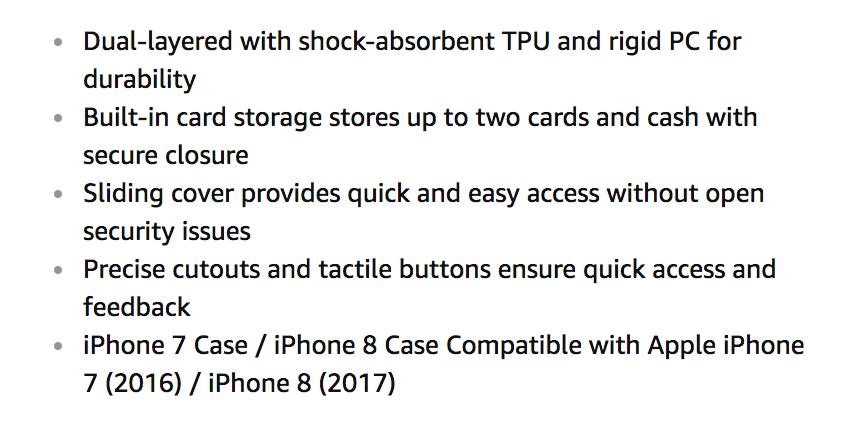Amazon's fourteen global marketplaces provide an excellent opportunity for you to expand your business and tap into new customer bases across the world. An essential part of growing your business across borders is ensuring you can communicate with your newfound customers.
In each marketplace, Amazon requires that your product listings and customer service are provided in the local language. Amazon’s focus is always on the customer, and this improves the customer experience all around the world while also maintaining the quality of the Amazon brand.

If you’re expanding your sales outside of your home marketplace and you’re not sure how to create product listings for a new Amazon marketplace, don’t worry: we’ve got you covered!
Think like a local.
Before you enlist the help of a translator to write your existing product listings in another language, take some time to really research and understand your new customers.
Do cultural research.
When selling in a new country or region, it’s best to perform an in-depth study to learn their linguistic differences and social customs. Your research can be as simple as watching your favorite television show or movie with subtitles, or as intensive as taking a class to learn the grammatical rules and nuances of the local language.
As you learn more about a culture you’ll discover what customers look for in a product. For example, in Japan, it’s polite to remove your shoes before entering a home. This has given rise to an enormous sock culture and marketplace. Without learning about Japanese sock etiquette (bare feet are considered rude), sock vendors could miss out on a large customer base.
Do online research to find out about popular holidays and holiday gifts. This will give you insight into what customers want to purchase and when they purchase it, so you can make sure to have the right items in stock. U.S. customers would be adrift without candy canes at Christmas!

Do keyword research.
Keyword research can be a quick and easy way to become familiar with linguistic differences. This discovery process allows you to find out what people are actually searching for, rather than what you think they might be searching for. It also helps you understand trending terms and less popular phrases.
Here’s an example:
In the United States, most Americans will protect their mobile phones with a “phone case.” By using the MerchantWords database, we learned that in other languages this phrase doesn’t translate directly.
In French, you would use the word “coque,” and in German, it’s called a “hülle,” both of which translate into “shell” in English.
Those speaking Spanish sometimes use the word “funda” which means “sheath” in English.
And in both Italy and India, shoppers search for “phone covers” rather than “phone cases.”
By finding the right words to communicate with your customers, you can make business decisions that boost your product listings and increase your sales!

Optimize your listings with your (new) customers in mind
Use these tips when creating or updating your Amazon product listings.
1. Avoid using idioms and slang.
Sometimes a commonly used expression in one language makes absolutely no sense in another because the meaning of the entire phrase does not correspond to the literal translation of the words. Avoiding these phrases will help guarantee that your customers understand and gain information from your listing.
If you’re still unsure of what we mean, here are a few common American idioms and slang examples and their meanings:
Idioms
solid as a rock: very reliable or calm
costs an arm and a leg: an object or experience that is very expensive
kill two birds with one stone: to achieve two things, both at the same time; or to do something quickly and easily
Slang
lit: cool or exciting
extra: over the top, excessive
G.O.A.T.: greatest of all time, used in reference to a product or person you believe to be the absolute best in their category, industry, or field.
2. Use simple language.
Stay away from complex tenses and overly sophisticated words. Use language that is clear, concise, and easy to understand. Try to avoid communicating too many ideas within a single sentence or paragraph. This will minimize the potential for confusion.
3. Create a better customer experience (in any language).
Once you start writing your listing, keep in mind the following guidelines for each section.
Title: Keep your title simple. Include your brand, product type, color, size, and quantity. While the order will vary according to the language, punctuation should be used for easy reading. The most relevant and highest-searched keywords for your product should go in your title.


These titles give Amazon.com and Amazon.fr shoppers crucial product information.
Bullet Points: These are best used to convey information quickly to your customer. Choose an important aspect of your product for each one. In precise language, describe that characteristic (size, material, color, etc.) then move on to the next bullet point.

The bullet points in this listing highlight the product’s features.
Description: This section is an ideal place for your long-tail keywords or keyword phrases. However, remember to keep your original language simple in preparation for your translation. Sellers use this space differently. Some describe their product while others explain its multiple uses. Whatever approach you take, remain in the present tense. It’s going to sound basic in your native tongue but that’s okay! Remember to write in complete sentences in this section.
Search Terms: This section is where you enter any keywords you couldn’t fit into your title, description, or bullet points. These keywords aren’t visible to customers, but Amazon still uses them in their search algorithm. You should always try to include as many keywords as possible elsewhere in your listing because you only have 250 bytes (equal to 250 Latin characters) in this section. There’s no need to stuff this section with misspellings or plurals as the Amazon algorithm already accounts for those.
Need more help?
Do you already have a listing in English that you think could use some improvement? Check out MerchantWords’ Listing Advisor service! Our U.S.-based Amazon experts research, write and optimize your existing listings, so you can get more customer visits and grow your sales.
Remember, an optimized listing is only half the battle. Amazon takes into account your price, inventory, sales history, and reviews when placing your listing on a results page. Maintaining high metrics will also increase your standings on the search results page.

